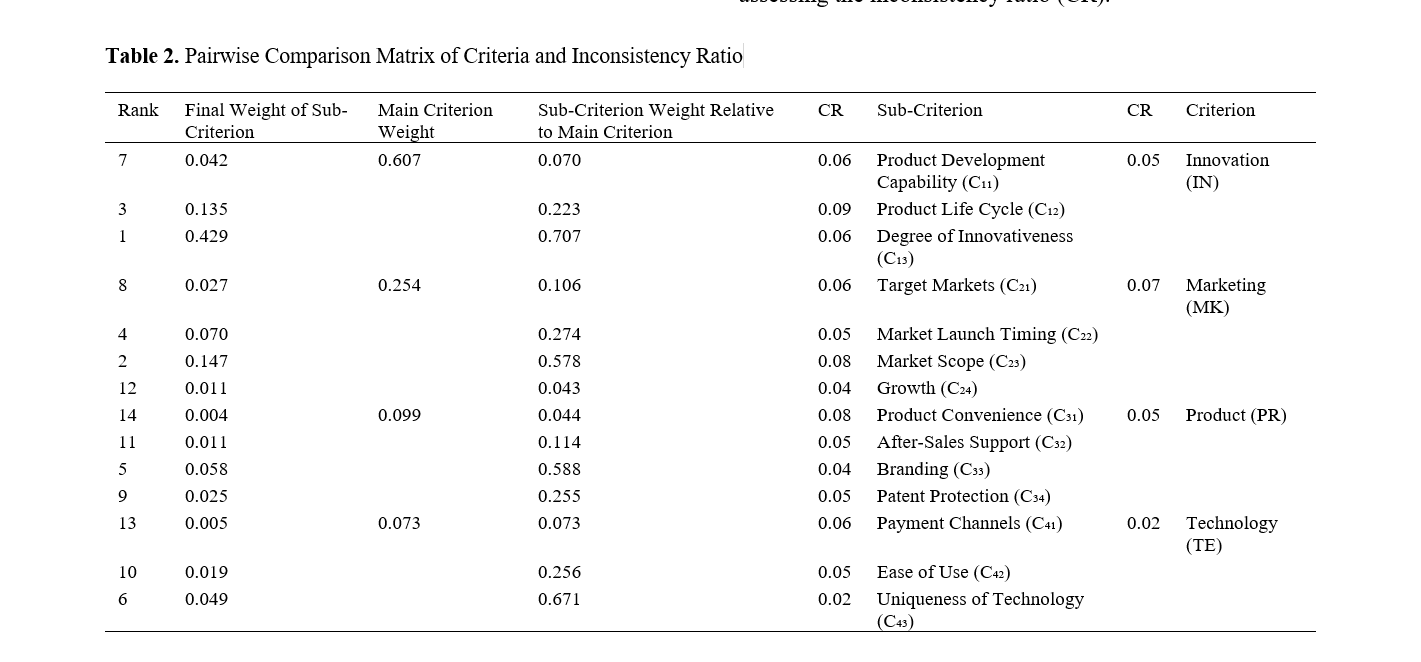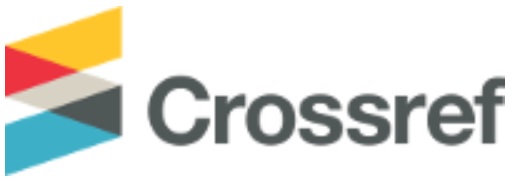Selecting the Best Pricing Strategy for Innovative Products
Keywords:
Pricing strategy, innovative products, fuzzy AHP, strategy selectionAbstract
The purpose of this study is to identify and rank the most effective pricing strategies for innovative products in the Iranian market, with an emphasis on key influencing factors and the provision of a scientific framework for managerial decision-making. To this end, the main research question focused on determining the most critical factors affecting the selection of the optimal pricing strategy and how these factors can be applied within a systematic framework. The methodology employed was the Fuzzy Analytic Hierarchy Process (FAHP), which enabled precise prioritization of options based on multiple criteria and expert judgment. The statistical population of the study consisted of 10 individuals, including senior marketing managers and experts from companies active in the field of innovative products, as well as academic specialists in business management and marketing. The main criteria and sub-criteria were considered across four key dimensions—innovation (product development capability, life cycle, degree of innovativeness), marketing (target markets, launch timing, market scope, growth), product (ease of use, after-sales support, branding, patent protection), and technology (payment channels, consumption convenience, technological uniqueness). Six pricing strategies were evaluated as decision-making options: prestige pricing, versioning, windowing, exclusive products, fixed pricing, and dynamic pricing. Findings from the FAHP analysis revealed that prestige pricing (weight = 0.444) is the most suitable strategy for innovative products in the Iranian market. Versioning ranked second with a weight of 0.268, while other strategies such as windowing, exclusive product pricing, fixed pricing, and dynamic pricing occupied the subsequent ranks, respectively. The results, in addition to providing a clear picture of the prioritization of pricing strategies, confirm the use of fuzzy multi-criteria decision-making models as an effective tool for analyzing marketing challenges in the context of the Iranian market. These findings offer practical and scientific guidance for managers, policymakers, and researchers in the domain of innovative product pricing.
References
P. Kotler, K. L. Keller, and A. Chernev, Marketing management. Pearson, 2022.
T. T. Nagle, J. Hogan, and J. Zale, The strategy and tactics of pricing: A guide to growing more profitably. Routledge, 2021.
A. Hinterhuber and S. M. Liozu, Innovation in pricing: Contemporary theories and best practices. Routledge, 2020.
E. M. Rogers, Diffusion of innovations. Free Press, 2020.
S. Yoon and K. Lee, "Price strategy for innovative products: The moderating role of product newness and consumer innovativeness," Innovation: Organization & Management, vol. 20, no. 2, pp. 134-150, 2018, doi: 10.1080/14479338.2018.1425906.
O. Tarde, R. Smith, and L. Chen, "Innovation-based pricing: Market entry strategies for high-tech products," Technovation, vol. 94-95, p. 102001, 2020.
H. Zhao, X. Yao, Z. Liu, and Q. Yang, "Impact of Pricing and Product Information on Consumer Buying Behavior With Customer Satisfaction in a Mediating Role," Frontiers in Psychology, vol. 12, p. 720151, 2021, doi: https://doi.org/10.3389/fpsyg.2021.720151.
L. Tian and Y. Wu, "Pricing Strategies in Presence of Online Consumer Ratings - From the Product Customization Perspective," Journal of Theoretical and Applied Electronic Commerce Research, vol. 15, no. 3, pp. 84-100, 2020, doi: 10.4067/s0718-18762020000300107.
X. Yuan, Z. Ma, and X. Zhang, "Dynamic Pricing for the Successive-Generation Products in the Presence of Strategic Customers and Limited Trade-in Duration," Kybernetes, vol. 52, no. 11, pp. 5329-5352, 2022, doi: 10.1108/k-02-2022-0237.
N. Alizadeh and A. Tavan, "Determining Product Innovation Capacities, Market Intelligence, Pricing, and Marketing Communications on International Company Performance with the Mediating Role of Competitive Advantage," Modern Management Engineering, vol. 30, pp. 83-116, 2023. [Online]. Available: https://sanad.iau.ir/en/Journal/jmem/Article/1025146/FullText.
H. Abbasi Esfanjani, "The Impact of Product Innovation Capabilities, Market Intelligence, Pricing, and Marketing Communications on Competitive Advantage and International Performance of Small and Medium-Sized Enterprises in Hormozgan Province," International Business Management, vol. 20, pp. 159-178, 2022. [Online]. Available: https://jiba.tabrizu.ac.ir/article_15714.html?lang=en.
J. Lee and D. A. Griffith, "Price strategy in global markets: Balancing standardization and adaptation," International Marketing Review, vol. 39, no. 2, pp. 381-407, 2022.
R. Schill and M. Nixon, "The seven 'C's of strategic pricing in international markets," Journal of Cultural Marketing Strategy, vol. 8, no. 2, pp. 175-191, 2024, doi: 10.69554/OCWL9175.
N. H. Tien, D. B. H. Anh, and P. P. Phu, "Pricing strategies for innovative products in emerging markets," Journal of Business and Economic Development, vol. 8, no. 1, pp. 25-34, 2023.
A. Salmasnia and A. Talesh-Kazemi, "Integrating inventory planning, pricing, and maintenance for perishable products in a two-component parallel manufacturing system with common cause failures," Operations Research International Journal, vol. 22, pp. 1235-1265, 2022, doi: 10.1007/s12351-020-00590-6.
C. Yang, Y. Feng, and A. Whinston, "Dynamic pricing and information disclosure for fresh produce: An artificial intelligence approach," Production and Operations Management, vol. 31, no. 1, pp. 155-171, 2022, doi: 10.1111/poms.13525.
L. Feng and Y. Chan, "Joint pricing and production decisions for new products with learning curve effects under upstream and downstream trade credits," European Journal of Operational Research, vol. 272, no. 3, pp. 905-913, 2022, doi: 10.1016/j.ejor.2018.07.003.
A. Rakhmanita, R. Hurriyati, and P. D. Dirgantari, "Strategy of Gamification, Product and Pricing: Does It Matter on Buying Interests of Fore Coffee Consumers," Sentralisasi, vol. 11, no. 1, pp. 28-36, 2022, doi: 10.33506/sl.v11i1.1493.
J. Xu, Q. Meng, Y. Chen, and Z. Jia, "Dual-Channel Pricing Decisions for Product Recycling in Green Supply Chain Operations: Considering the Impact of Consumer Loss Aversion," International Journal of Environmental Research and Public Health, vol. 20, no. 3, p. 1792, 2023, doi: 10.3390/ijerph20031792.
A. S. Mahapatra, S. Sengupta, A. Dasgupta, B. Sarkar, and R. T. Goswami, "What is the impact of demand patterns on integrated online-offline and buy-online-pickup in-store (BOPS) retail in a smart supply chain mana gement?," Journal of Retailing and Consumer Services, vol. 82, p. 104093, 2025/1/1/ 2025, doi: 10.1016/J.JRETCONSER.2024.104093.
J. Peng, Y. Zou, H. Zhang, L. Zeng, Y. Wang, and X. Li, "Pricing Decision-Making Considering Ambiguity Tolerance in Consumers: Evidence From Recycled Building Material Enterprises," Systems, vol. 13, no. 2, p. 98, 2025, doi: 10.3390/systems13020098.
L. Shao, "The Pricing Decision and Channel Choice of Upgraded Products in the Presence of Strategic Consumers," Mathematical Problems in Engineering, vol. 2021, pp. 1-10, 2021, doi: 10.1155/2021/6674676.
Y. Xu, "Comparison Between Different Pricing Models: Evidence From the Technology Industry," Advances in Economics Management and Political Sciences, vol. 59, no. 1, pp. 222-230, 2024, doi: 10.54254/2754-1169/59/20231126.
M. L. Martín-Peña, E. Díaz-Garrido, and J. M. Sánchez-López, "Pricing strategies in the digital era: A review and research agenda," Journal of Business Research, vol. 123, pp. 252-265, 2021.
L. Wang, "Leveraging Emerging Technologies in Pricing Strategies and Consumer Behavior: Case Studies From China's Innovative Markets," Ijetaa, vol. 1, no. 6, pp. 6-12, 2024, doi: 10.62677/ijetaa.2406121.
A. A. Afaqhi Firimani, J. Marzi Almdari, and A. Deigh, "Examining the Relationship Between Product Pricing Strategies and Marketing Capabilities (Case Study: Manufacturing Companies Located in the Aras Free Zone)," in 7th National Conference on New Horizons in Humanities, Economics, and Entrepreneurship, Tehran, 2023. [Online]. Available: https://civilica.com/doc/1992727.

Downloads
Published
Submitted
Revised
Accepted
Issue
Section
License
Copyright (c) 2025 Shahriar Habibi Doroh (Corresponding author); Mohammad Forghani, Farzam Zarrabpour (Author)

This work is licensed under a Creative Commons Attribution-NonCommercial 4.0 International License.











